
Puentes de Salud unveils new mural celebrating Latino culture and literacy
The mural, which is part of an interactive public art project, represents the community that the clinic helps.
When you enter Puentes de Salud, you are immediately greeted with three new murals that are located directly in front of and to the right of the door.
On Nov. 12, Puentes de Salud unveiled murals and interactive installations as part of a project called, El Proyecto Grandote, which challenges the notion that literacy only relates to reading and writing. The project is being funded by Kaboom! and the William Penn Foundation.
Cesar Viveros, one of the artists, explained that the murals show the history of Latin America.
The Red Wall is first and depicts its origins. It features the cultivation of crops like corn and prickly pear, as well as elders to show the passing down of knowledge.
The second is The Sky mural, which depicts traditional crafts including weaving and making clay figures. It also features two wampum belts to symbolize the Lenape tribe, whose land Philadelphia sits on, and water that connects to an island that symbolizes that Caribbean.
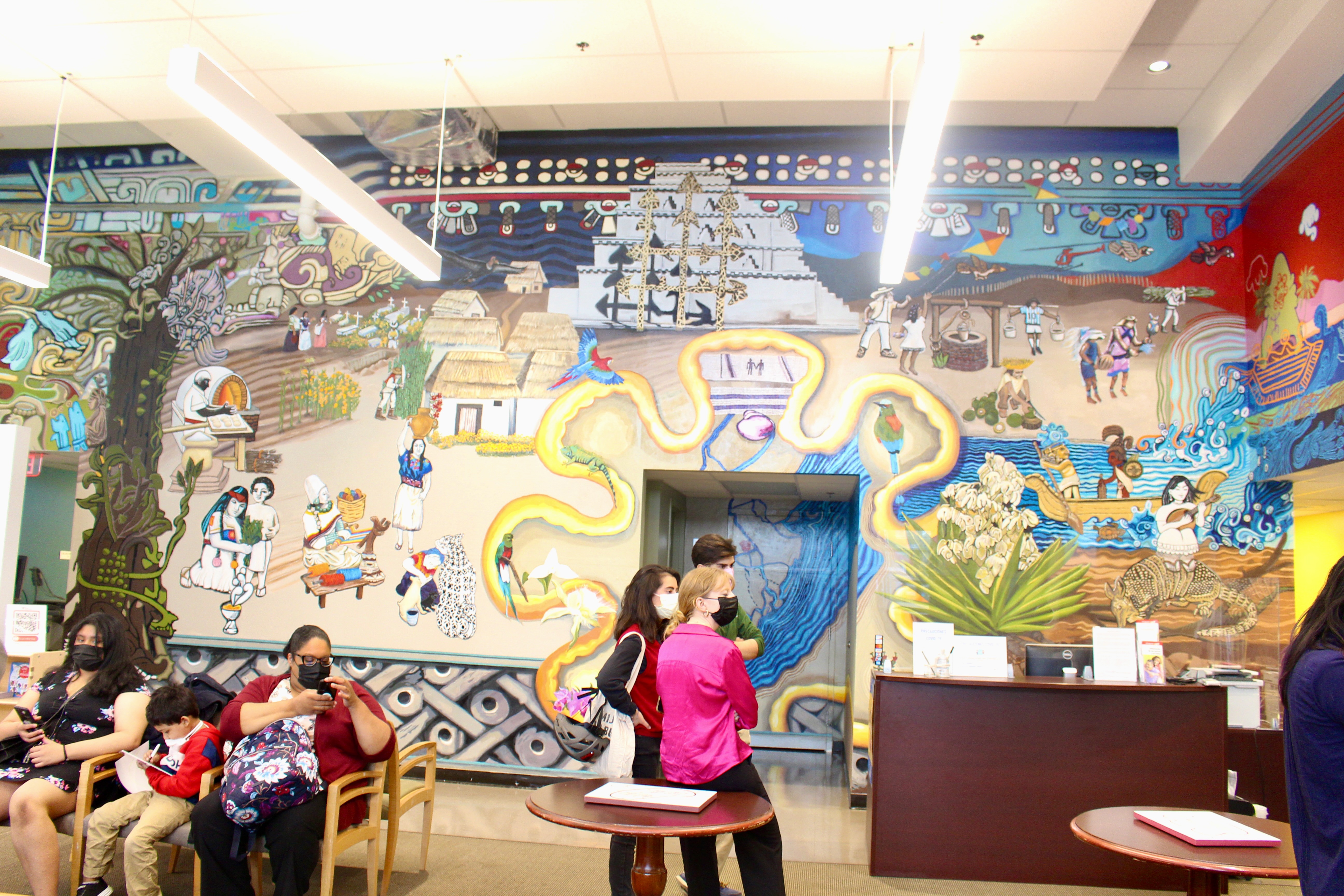
This water also flows into the final mural, La Fiesta, which depicts a party full of people from all over Latin America and the Caribbean. The people depicted were modeled off of community members, as well as some of the artists. Under the mural are several doors that open to reveal photos and small versions of cultural items, like a picture of a Quetzal bird and mini marimba.
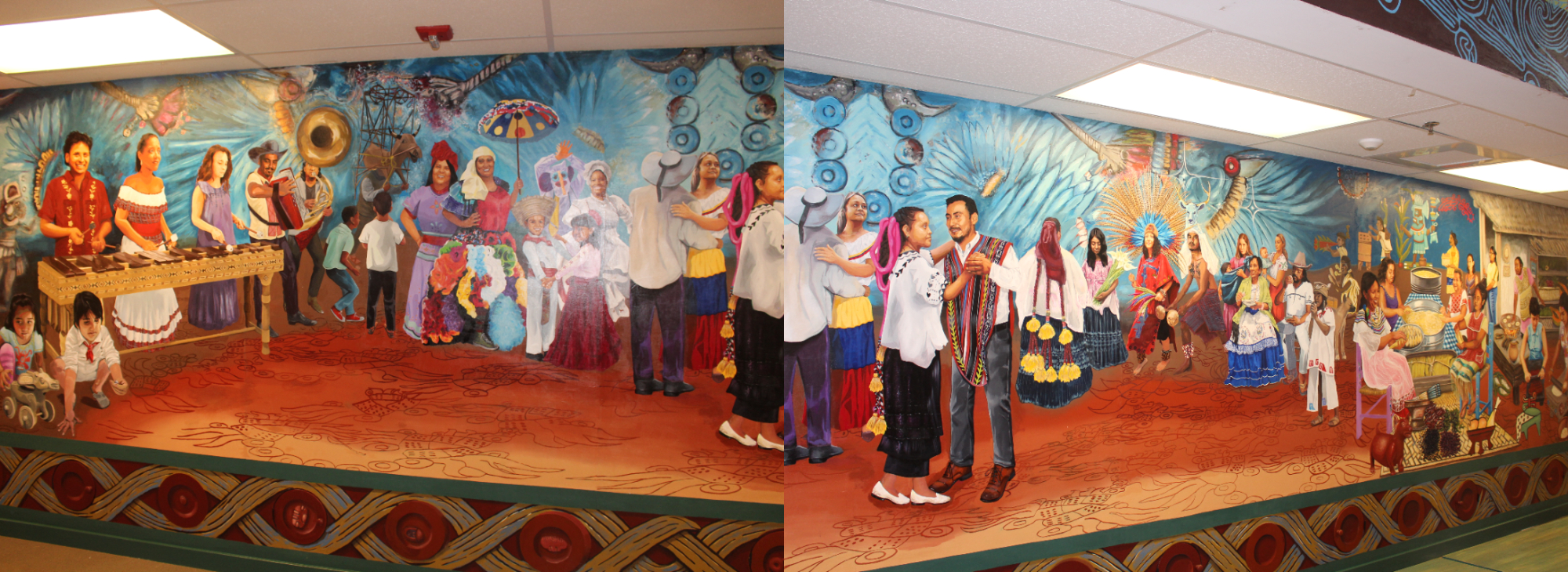
Across from the final mural is a Loteria game. The game has images and words in four languages; English, Spanish, Nahuatl, and Q’eqchi’.
Orfelina Feliz Payne, executive director of Puentes de Salud, told AL DÍA that in the future, there will be a touch screen beside the game so people can hear how the words are pronounced and spoken in each language.
Pablo Rodriguez and Margarita Aparicio are the native speakers who did the indigenous language translations.
Rodriguez is a native speaker of Q’eqchi’, a Mayan language spoken in Guatemala and Belize.
Q’eqchi’ is the third most spoken language in Guatemala, just behind Spanish and K’iche’, another Mayan language, spoken by about 12% of the population. Rodriguez explained that it is also popular in the United States because people from his community have focused on not losing their culture when they come to the U.S.
In addition to providing translation work, Rodriguez also helped with Guatemalan cultural details on the mural.
Margarita Aparicio is a native speaker of Nahuatl, an Uto-Aztecan language spoken in Mexico.
Like Q’eqchi’, Nahuatl is spoken by around 2 million people. Due to the size of Mexico’s population however, it is only spoken by around 2% of the population.
In addition to the population difference, Aparicio explained that for her generation, being able to speak an indigenous language was seen as shameful. She and her brothers know the language, but the next generation of her family does not.
RELATED CONTENT
She said that working on the project was very personal for her because it made her realize her value in knowing an indigenous language.
“I really appreciated being in this project because it made me realize the importance of my own culture and my own knowledge, that I want to make sure that my own children understand and know their culture and have the same knowledge so they don’t forget,” Aparicio added in Spanish.
Both Aparicio and Rodriguez spoke to AL DÍA with Feliz Payne translating.
The El Proyecto Grandote project started in 2020. The first phase of the project was community outreach, which occurred over Zoom due to the pandemic. The artists conducted various sessions with the community to get cultural details from people of different nationalities.
Nora Litz, Puentes de Salud’s director of arts and culture, is the brains behind the mural. She is originally from Mexico City and has been the organization’s first arts and culture director since 2013.
During her speech at the official mural unveiling, Litz thanked everyone who helped create the murals. She also talked about how their [Latine] cultures are looked down on by the same people who display their things in museums as important.
When it comes to introducing the next generation to their history and culture, Litz said, “We are the best teachers for our children.”
Viveros said in his speech that the mural had to be “the story of us.”
To him, that meant keeping the people who come into the clinic interested and sparking memories of their families through the familiar things they see in the mural.
Puentes de Salud is an organization whose goal is “to provide the social, economic, and health resources necessary for individual and community empowerment.” They provide the community with a clinic and mental health resources, as well as arts and culture and education programs.




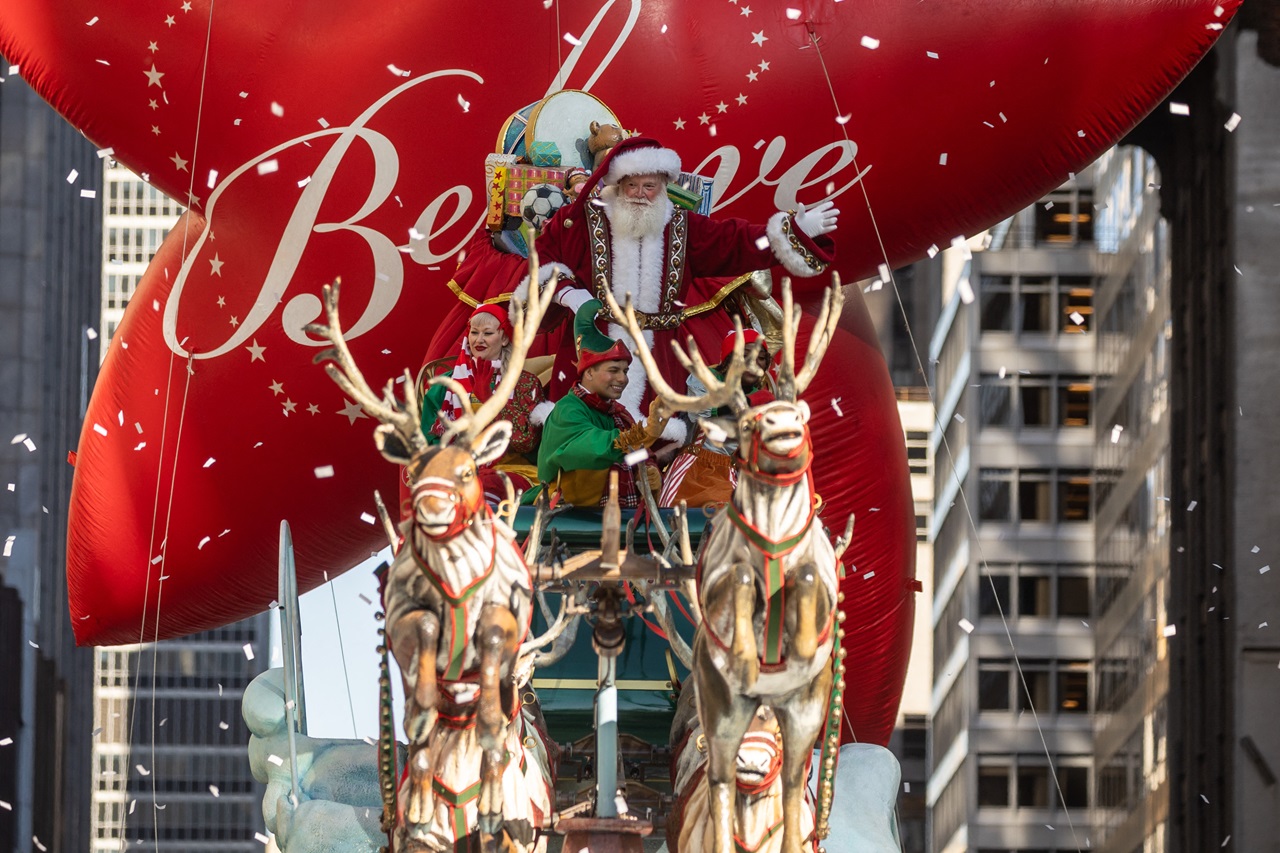
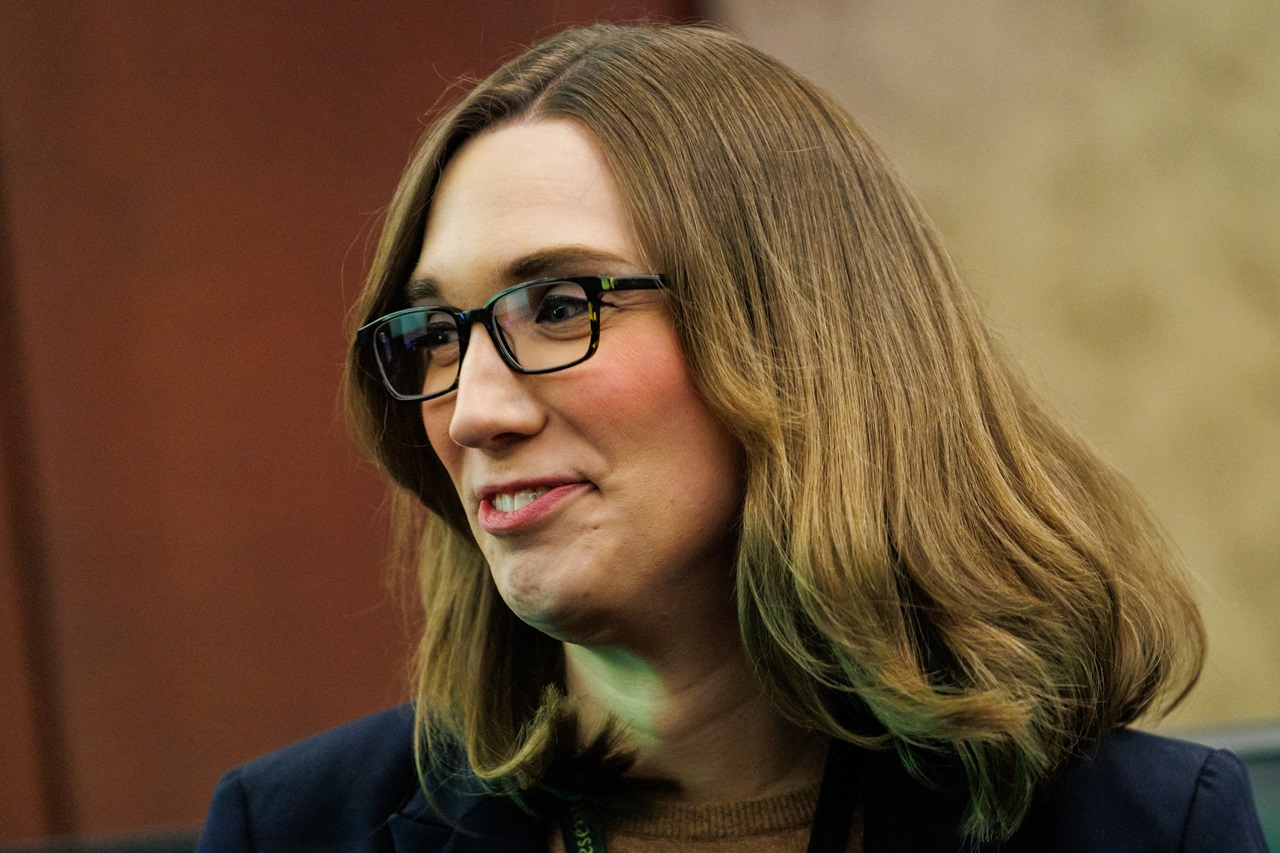


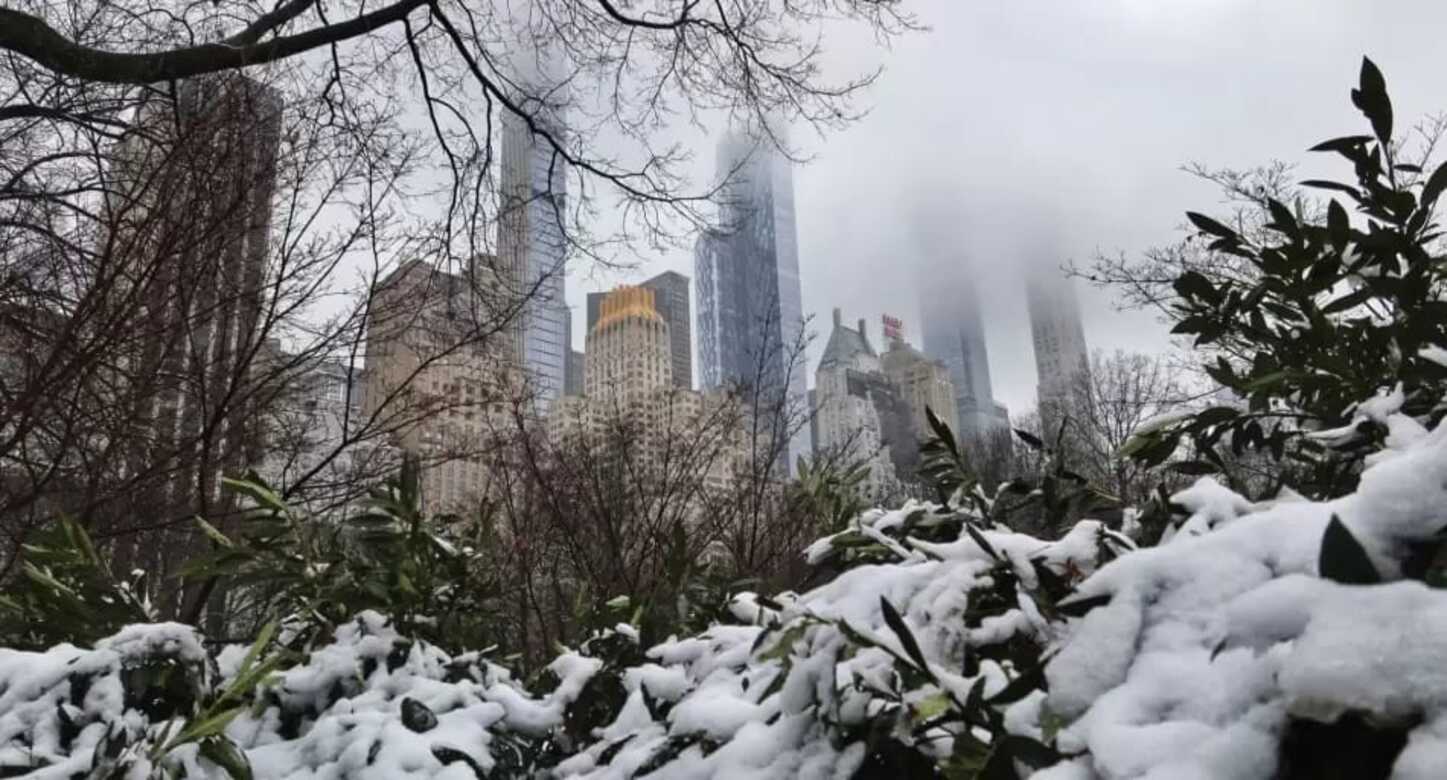
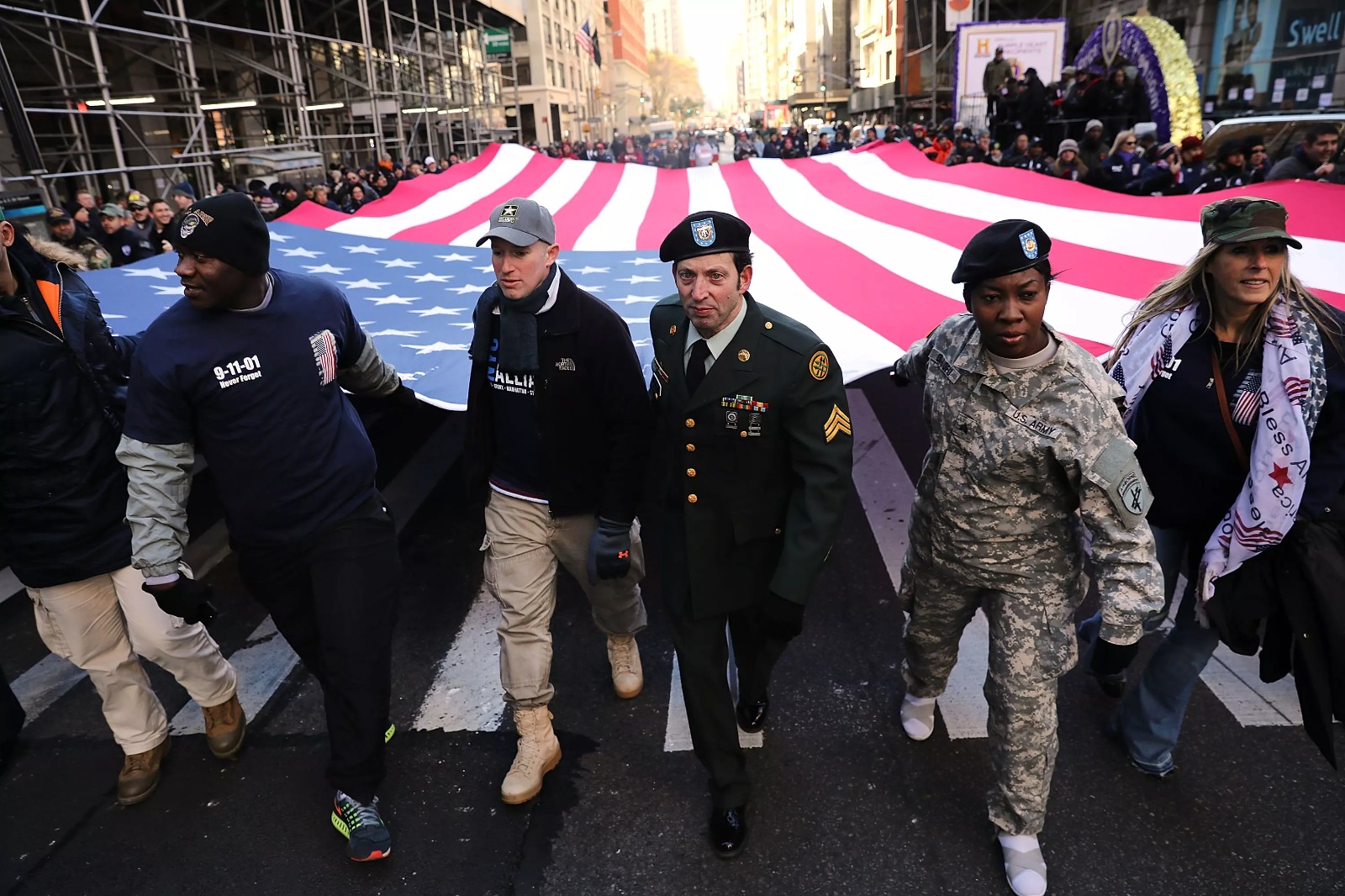

LEAVE A COMMENT:
Join the discussion! Leave a comment.